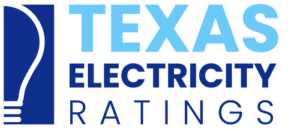Learn More About ERCOT and PUC

Keeping electricity humming along to homes in the Lone Star state was never easy. Though technology has changed, demand has grown. After all, there’s roughly 26 million Texas electricity customers expected to use their share of 98,000 megawatts (MW) this summer. In spite of that, there are two agencies that keep the Texas grid from wandering too close to the edge of reliability. So, let’s find out who these key players in the Texas electricity market are. And specifically, find out how they affect consumer electricity rates in the Lone Star State.
PUC Sets Electricity Rules in Texas
Firstly, the Public Utility Commission (PUC) oversees most of the utilities in Texas. For example, the PUC keeps an eye on your water, telephone, and TV cable utilities. Most important of all, it enforces rules and laws that keep your electricity service fair, reliable, and safe. Basically, the PUC controls how retail providers can sell power to their customers. Likewise, it also approves the delivery rates your local utility charges you. Above all, the PUC oversees how the Electric Reliability Commission of Texas (ERCOT) manages its grid. And that includes how ERCOT runs both its electricity market and its grid.
ERCOT Controls Energy Flow
ERCOT is a nonprofit company that operates the Texas Interconnection grid, the largest of four grids in the state. While the ERCOT grid covers about 75% of the land in Texas, it includes nearly 90% of demand. Altogether, that adds up to 650 power plants and 52,700 miles of power lines and switch stations to power your home.
Given that, ERCOT must run 24 hours a day to keep your lights on. So, as the Texas ISO, ERCOT has two jobs. Firstly, it must find enough power to meet demand. That not only includes lining up power plants but also sending the power on schedule to cities and towns in its grid. This is important because an overloaded grid can cause blackouts, leaving Texans without power at difficult times.
Secondly, ERCOT acts as a broker for wholesale power buyers and retail sellers. These retailers then sell electricity at the best prices to you. ERCOT also uses demand to set what the price is at different locations. So, if there’s not enough power for an area, then prices there rise. Thus, ERCOT balances supply with demand to keep power prices competitive.
Why Is the ERCOT Grid Separate?
While most states are part of one power grid or another, Texas has its own. For that reason, by not crossing state lines, the ERCOT grid avoids federal control. The downside, however, is that the Texas power grid is on its own. It can neither send out electricity nor get much help from other grids.
Find the Best Electricity Rates in Texas
In short, the PUC and ERCOT work together to provide electricity at a reasonable rate to Texas customers. But it’s up to you to find the lowest rates for your home. So shop best plans and prices at https://www.texaselectricityratings.com. Find the best rates, choose your providers, and sign up for the best electricity deals in Texas.

